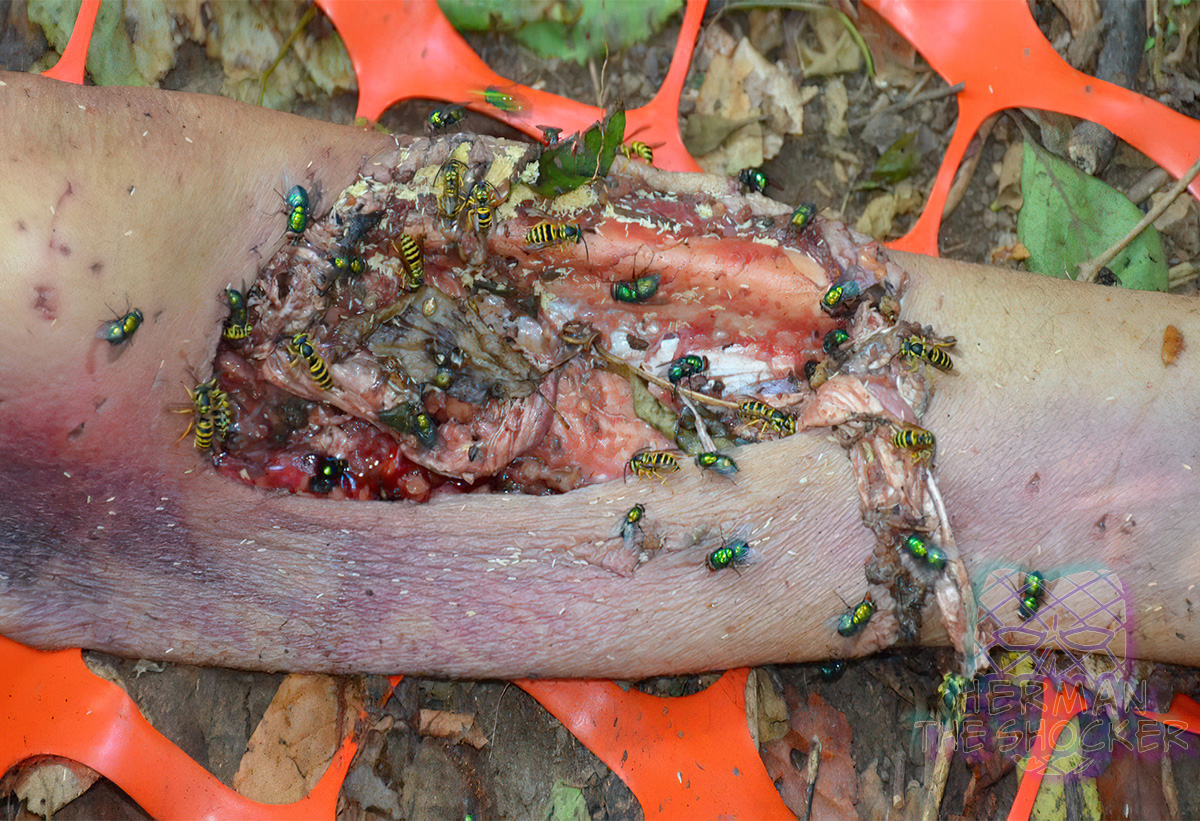Various insects may take advantage of the nutritional factors a decomposing body has to offer whether through natural orifices or as a result of scavenging, hence the phrase “death nectar”. In the image, Yellowjackets (Vespula) are seen utilizing “death nectar” and meat/protein in addition to fly and larval activity on a scavenged human limb in summer months at the body farm at The University of Tennessee, Knoxville, US.
Much research on how decomposition affects the soil takes place to help with analysing crime or archaeological scenes. Moisture, temperature and the nature of the soil are key factors in the rate of decay and, if these are understood and taken into account, the forensic scientist can work out how long the body has been there. Soil bacteria and chemical changes are also of interest to the forensic world – what they are and how long they have been there – because these changes can also suggest how long remains have been in place, influencing the microbial and chemical composition of the soil.
The University of Tennessee Anthropology Research Facility (ARF) is famous as a facility for study of the decomposition of human remains, with human corpses laid outside in different settings and their changes recorded. This has a forensic focus, but a study of the soil, with its long-term history of continuous decomposition, has found it to be fairly uniformly enriched by high-quality nutrients, compared with the soil outside the facility. This raises the question of whether generalised fertilising of a site which was also used for grass or grazing could be achieved by simple, shallow burial at the right density.
Latest posts








